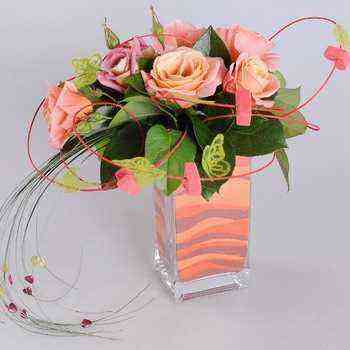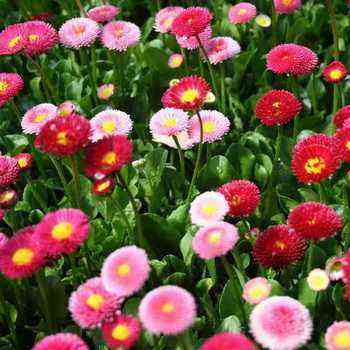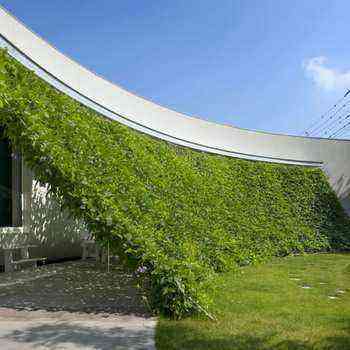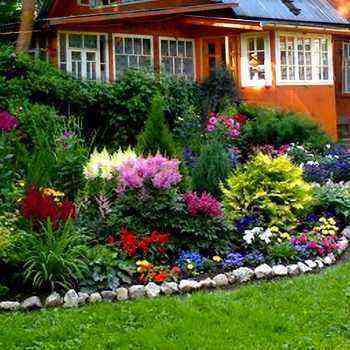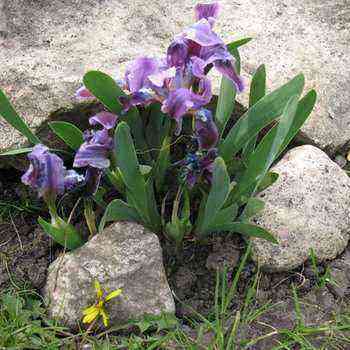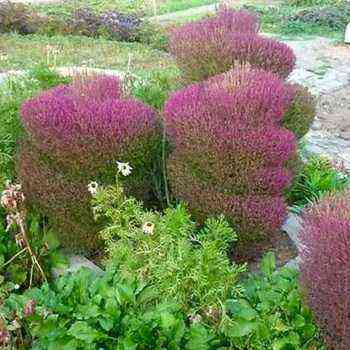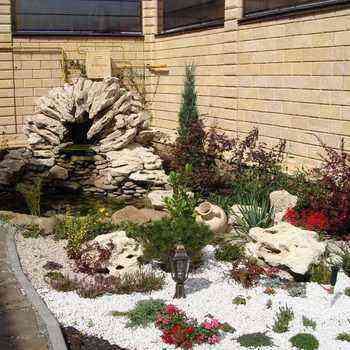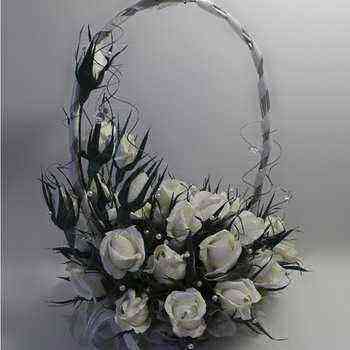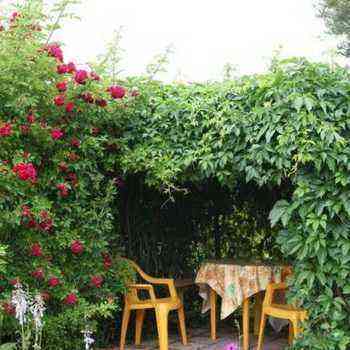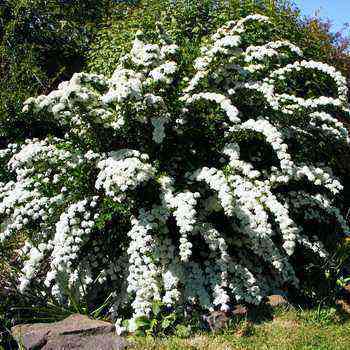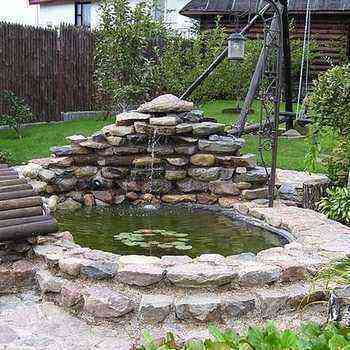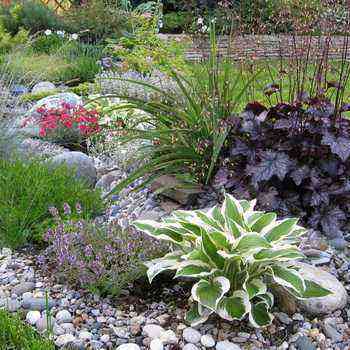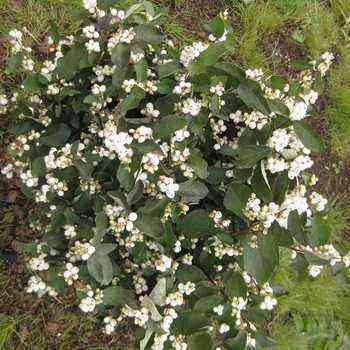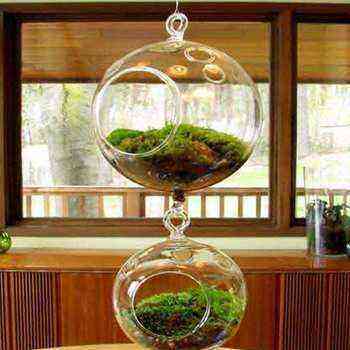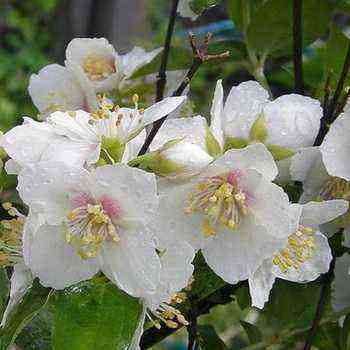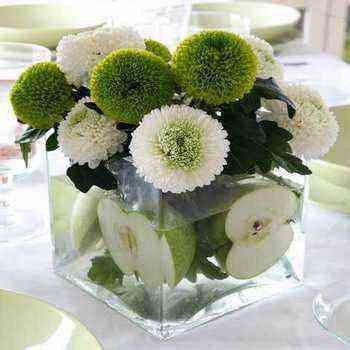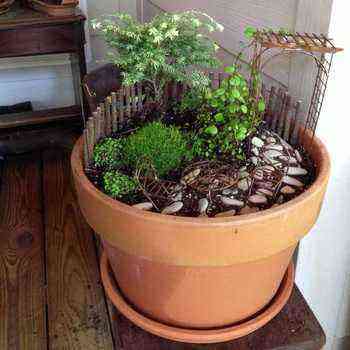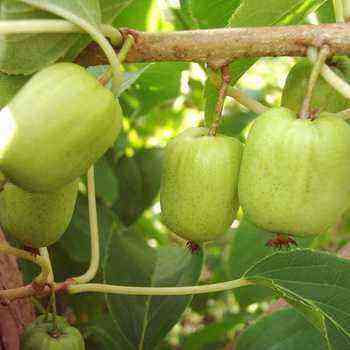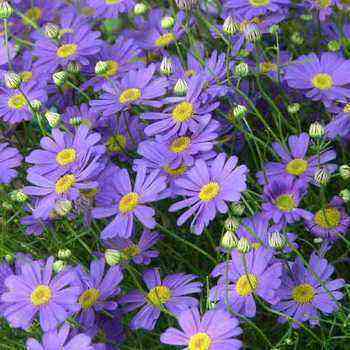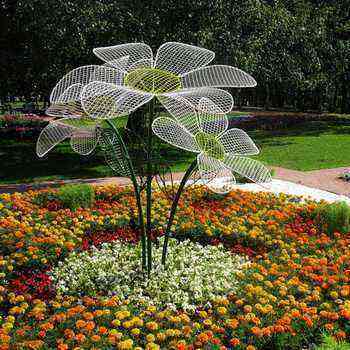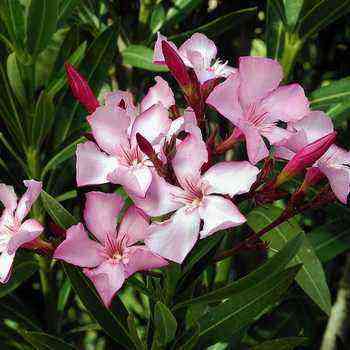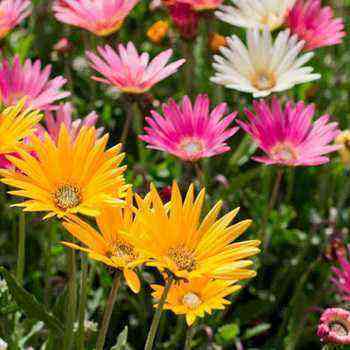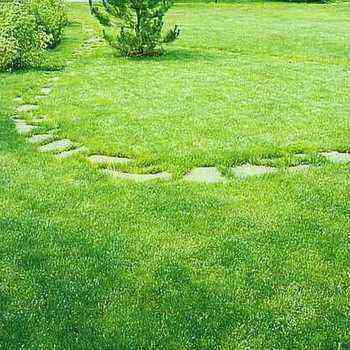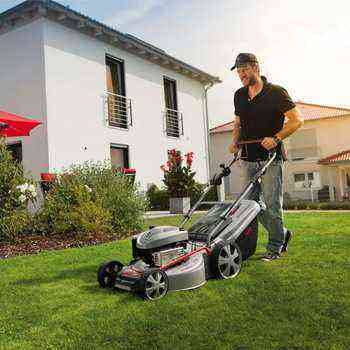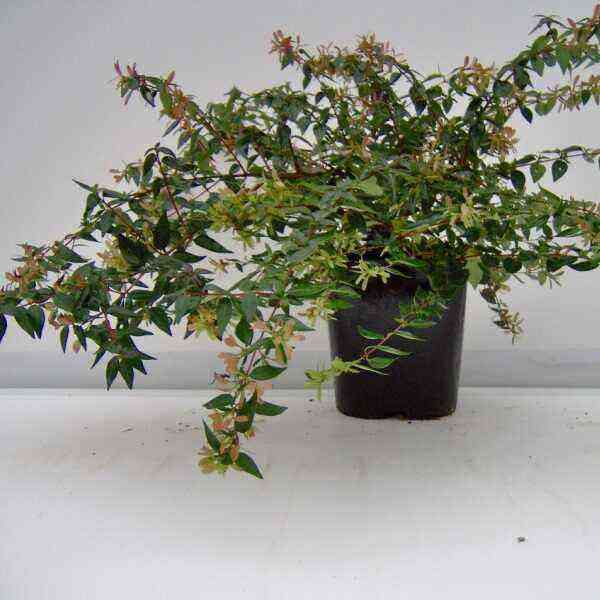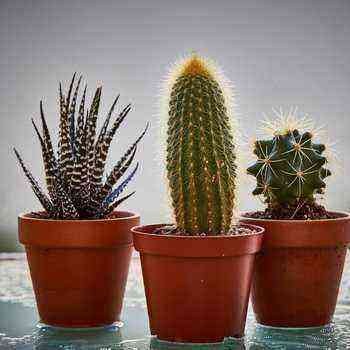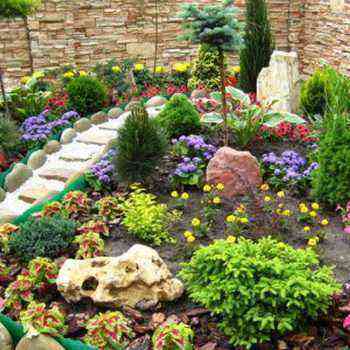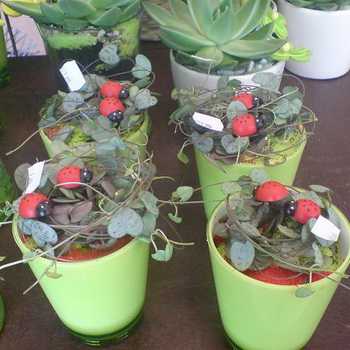 Flowers in pots and their compositions are an opportunity, using the most common plants, to create an atmosphere of comfort and warmth in any room. Potted compositions allow you to solve many problems facing a designer decorating a particular room. It is enough to look at the photo of the potted flower arrangements on this page to make it clear that such a solution allows you to effectively hide the existing flaws and emphasize the advantages.
Flowers in pots and their compositions are an opportunity, using the most common plants, to create an atmosphere of comfort and warmth in any room. Potted compositions allow you to solve many problems facing a designer decorating a particular room. It is enough to look at the photo of the potted flower arrangements on this page to make it clear that such a solution allows you to effectively hide the existing flaws and emphasize the advantages.
It cannot be denied that an outstanding plant deserves a place in a separate vessel, capable of creating its proper frame. But ordinary houseplants aren’t that great, and potted flower arrangements provide a number of benefits for them.
There are all sorts of ways to combine multiple pots into a group. The composition can be horizontal or vertical. The pots can just stand side by side, or they can be gathered together in some kind of open fixture, such as a metal jardiniere or a large pallet. During the Victorian era, stacked metal stands were used to group pots, including the popular corner shelves. These shelves have become antiques.
Plants can be humble or show a riot of color – there are no hard and fast rules. Grouping methods and types of pots can be very simple or truly sophisticated. The main purpose of creating a potty group is to make a part of the room more interesting with vibrant color.
Decoration of potted flowers
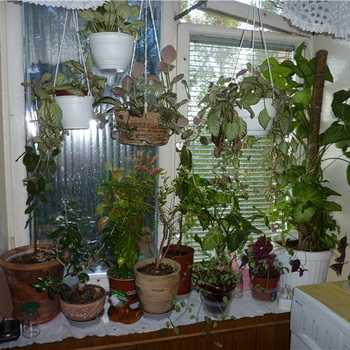 Using a certain design of potted flowers, you can correctly place accents and bring a touch of novelty to the already established design of the room. A key feature of the potting group is that the plants and pots form a coherent whole, in which each plant usually has an impact on its neighbors. This can be a decrease in light, an increase in air humidity or growth restriction.
Using a certain design of potted flowers, you can correctly place accents and bring a touch of novelty to the already established design of the room. A key feature of the potting group is that the plants and pots form a coherent whole, in which each plant usually has an impact on its neighbors. This can be a decrease in light, an increase in air humidity or growth restriction.
Advantages of grouping: imperfections can be hidden in the group. Plants scattered around the room tend to deteriorate over time. The lower leaves of some species, such as croton, can fall off due to dry air. The tips of the leaves of the palm tree and dieffenbachia that are burnt in too bright sun should be removed. In addition, small inflorescences on long stems often give the plant an unattractive appearance. There may also be a feeling of imbalance from a one-sided plant. These and other defects are inevitable – the way out is to collect plants in potted groups, in which the bases of the stems, cut leaves and long peduncles are hidden.
Plants are easier to care for in a group. The ritual of caring for the many plants scattered around the room involves moving from pot to pot. When the plants are in a potted group, it is much more convenient to use a watering can or sprayer. This is not a huge saving in time and effort, but there are other sources of time savings as well. Weak stems, one-sided growth, and flexible inflorescences in single-pot plants require a garter, but in a group these wayward stems can often be supported by their taller neighbors. In addition, the task of systematically cutting off brown leaf tips and other defects in a group is not so urgent, since there are many other leaves that can mask these imperfections.
In a group, plants develop better. It has been found that many plants benefit from being in a group next to others, compared to growing in isolation. This is usually explained by the fact that a special microclimate is formed in the group. The evaporation of moisture from freshly sprayed leaves and the watered compost surface in the surrounding pots makes the air more humid. This increase in moisture helps to reduce the drying out and shrinkage of the leaves of moisture-loving plants such as fishnet ferns.
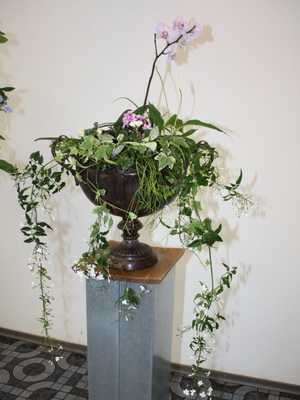
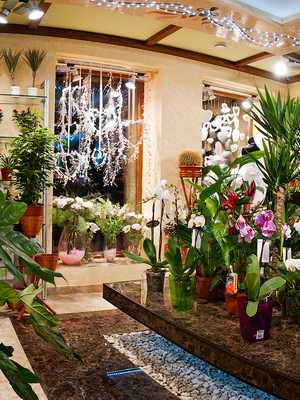
Plants tend to look better in a group. An attractive plant pot can stand alone or be grouped with others. In a group, such a plant will create an interesting focal point. Most small-leaved and low-growing plants do not have a high degree of visual appeal, and when grown as separate plants, they often appear nondescript. But in the pot group, they are able to take on three functions, which significantly increase the decorative effect of the entire group as a whole. They can fill the spaces between pots and the space in front of prominent plant specimens with greenery. In addition, the flowering of a humble plant is able to significantly decorate the composition in itself. Trailing plants soften the look of the leading edge of the containers in the pot group.
Compositions of potted plants and flowers and their photos
Pot plant compositions can be formulated in various variations and combinations. A standard potted flower arrangement can be applied in any room, but artistic grouping may require experience and knowledge.
Next, you can see the compositions of potted plants in the photo, which illustrate how to arrange them:

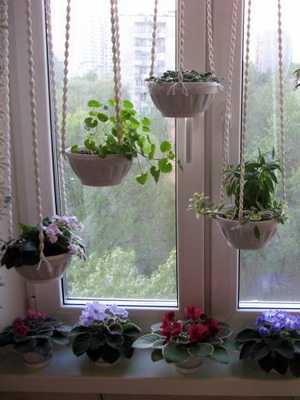
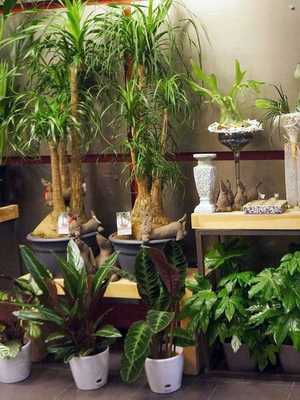

Standard grouping. A standard pot group is a collection of plants in individual pots placed close to each other. The main objects of interest are the plants, not the containers. Use generally accepted design principles to create a pot group that looks like it was made by a professional decorator. In the section on the basics of good design, you got some idea of the principles of creating compositions, and in the section on determining the place for plants, about the best position for them. And now it’s time to think about choosing pots for the group – this will help the section on suitable containers. Too much variety in colors, sizes and shapes will ruin the standard pot group.
It’s time to get some plants. Pick three or another odd number of plants. All plants in the group should have similar temperature and light requirements. There should also be a range of different heights and textures. Ornamental-leaved plants are usually chosen for a permanent base and several flowering plants to give the composition color.
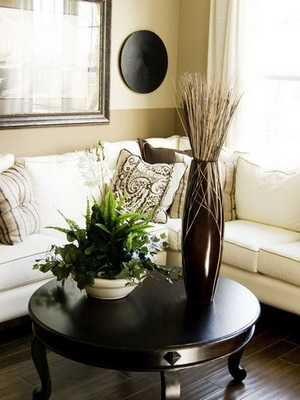

Composing a composition. If the potted group will be visible only from the front and sides, then in accordance with the general rule, tall plants should be in the back, and smaller ones in the foreground. Straight lines should be avoided – for example, lower the height of the rear at the sides and provide vertical drops to create a sense of movement. The overall shape of the composition is a matter of personal taste; the wrong pyramid is popular. If the composition is supposed to be viewed from all sides, taller plants are placed in the middle, surrounded by smaller plants. Once again, it is necessary to break this general shape in order to provide dynamics.
A little warning. A riot of colors, shapes and textures is unlikely to give your potty group a professional look. The compositions created by interior designers are often quite restrained and may consist of only ornamental plants.

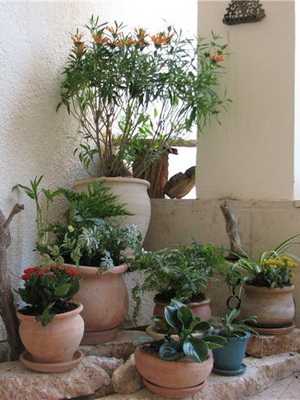
Artistic grouping. Designers sometimes create large and exotic potted groups filled with gorgeous plants in unusual containers. But the size, type and color of plants are not the main features of the art potting group. There are only two basic requirements.
Firstly, pots of at least two different heights are used – this creates a sense of volume. Secondly, the selection of pots is no less important than the selection of plants – in the composition, both of these components should be decorative.
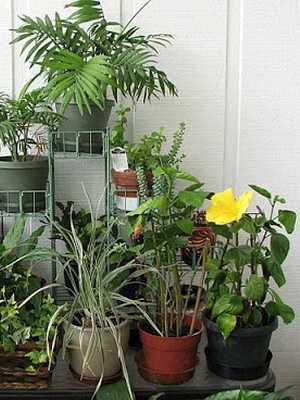

Planters are one of the main elements. In the composition shown above, the back planter contains a palm tree that is much taller than the rest of the plants. Smaller plants can be set up by lifting them up with a block of wood under the pot. It is very important that this top plant provides maximum decorative effect. The smallest pot contains a flowering pot plant that is replaced when the flowers wither. An ampel plant is grown in one of the medium vessels, and its stems fall freely at the base of the composition.
Potted group in a pebble tray
A potted group in a shallow pebble tray is a great way to grow plants that need high humidity in a centrally heated room. If your uzambara violets or orchids do not grow well, try placing them on a pebble tray. The height of the tray should be about 5 cm. If the tray will stand on a windowsill, make sure that it does not protrude too much beyond its limits.
Place 3 cm of pebbles on the bottom of the tray. Group the plants on the surface of this layer.
A good place for the pebble tray is on the radiator shelf under the windowsill. Under these conditions, the humidity around the plants in winter will be three times higher. Watering is easy – water can flow freely from the pots into the tray. The water level should not rise above the pebble surface.
Vertical compositions of flowers in pots
Flower arrangements in pots allow you to create in different planar directions. Vertical flower arrangements are the favorite technique of interior designers.

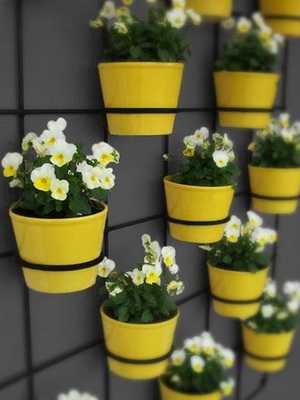
The vertical composition allows you to visually increase the height of the ceiling in the room and green the most inconspicuous corners. Pot groups are almost always horizontal. However, one can easily arrange a vertical composition that can look extremely effective. The traditional version is represented by a corner shelving unit with a pot on each shelf.
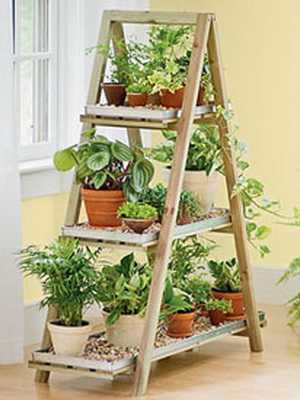
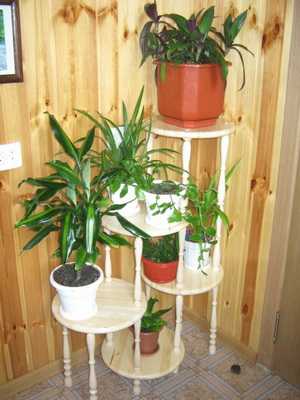
In such cases, one variety of colorful ampelous plants is used, forming a column of foliage or flowers. A series of hanging baskets attached to each other can be used to create the same effect. A metal or wooden stand with pots at different heights is handy because it is portable.
Flower arrangements of indoor plants in pots and their photos
Flower arrangements in pots can combine one or several shades of flowering. Many indoor flower arrangements are formulated to achieve near-continuous flowering throughout the year. Multicomponent indoor flower arrangements require special care, in particular additional lighting in winter and special dressing.
The following are the potted compositions in the photo, which show the variety of possible options:

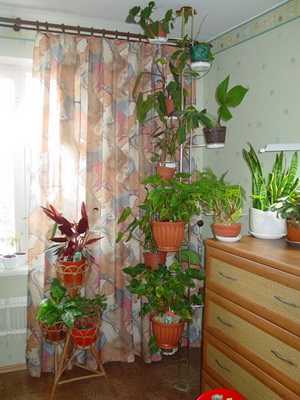


Multicolor group. Multi-color potted groups are as popular as this type of flower arrangement – a collection of vibrant flowers among a variety of foliage. Some designers, with good reason, believe that this is a too flashy way to use houseplants. This is true if a multicolor panel is mistakenly used in a room with a bright intricate pattern on carpet, wallpaper, paintings, etc. In a simple room, however, a multicolor panel can greatly enliven the setting.
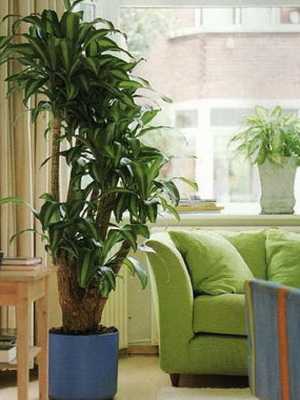
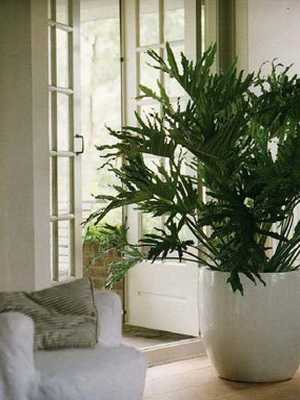
A muted group. The dominant element is plant foliage. Plants with feathery and whole leaves are used to ensure the predominance of green. To decorate the composition, you can include a few potted plants with pastel flowers, but the brightness and contrast should always be moderate. A muted composition looks good in front of patterned wallpaper or curtains; it also has a soothing effect when placed near brightly colored or ornate pieces of furniture.

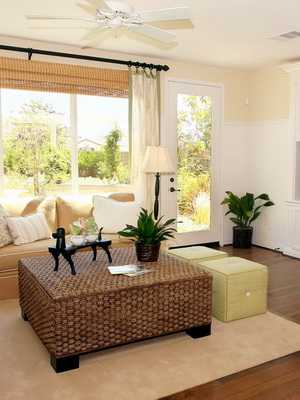
Monochrome group. Blue or white borders and cover beds from the same annual species are popular in some European countries. Despite the fact that this is common outdoors, monochromatic groups can rarely be found indoors, unless, of course, it is a set of ornamental plants. One of the most popular indoor plant compositions is a one-color indoor garden – a bowl filled with yellow daffodils or pink hyacinths.
